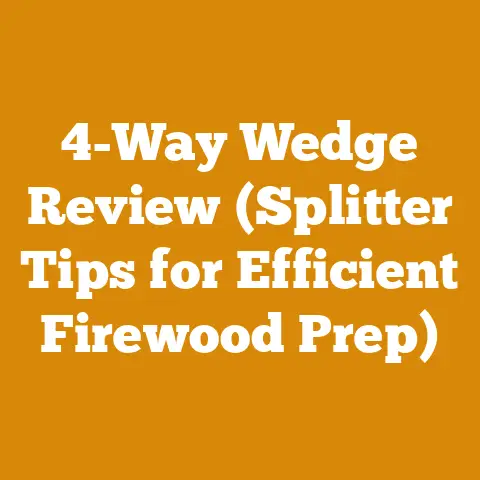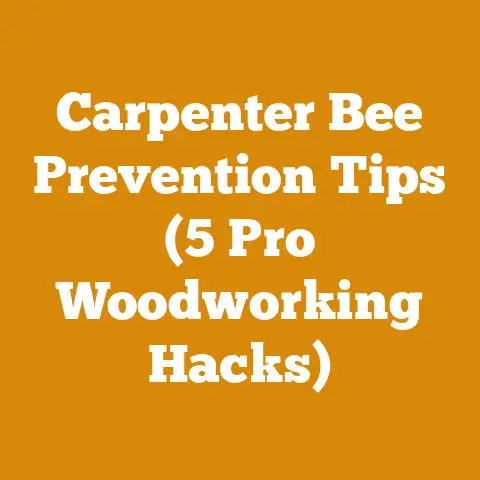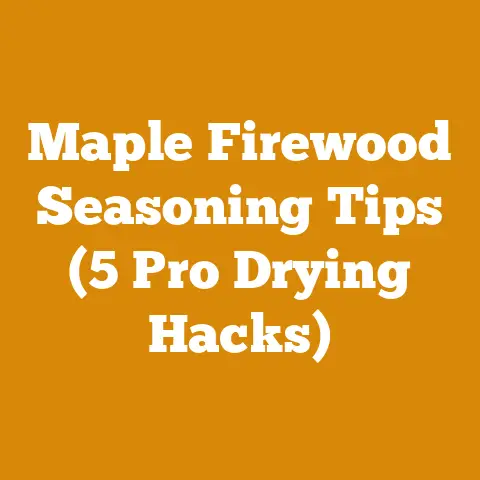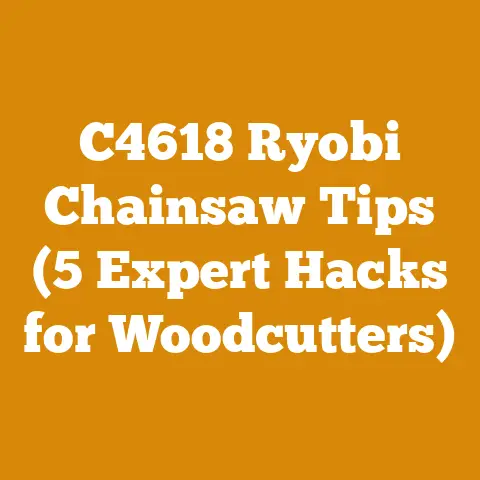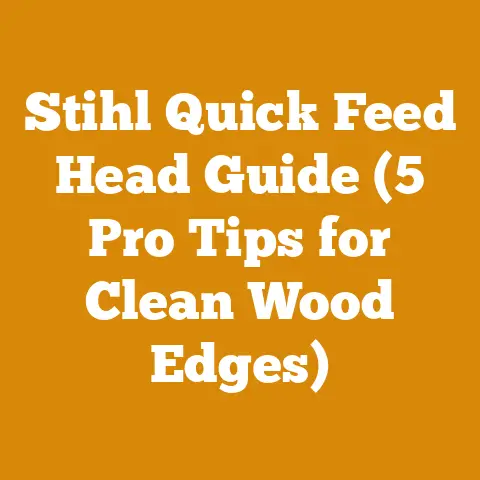Board and Batten Thickness (5 Pro Tips for Perfect Wood Grain)
Unlocking Beauty and Budget: The Ultimate Guide to Board and Batten Thickness (Plus 5 Wood Grain Secrets!)
Board and batten siding.
It’s the architectural darling that adds rustic charm, modern elegance, or a touch of farmhouse chic to any home.
But before you dive headfirst into this DIY project, there’s a crucial element you need to nail down: thickness.
And not just any thickness – the right thickness for your specific needs, aesthetic goals, and, most importantly, your budget.
I’ve spent years working with wood, from felling trees in the crisp autumn air to crafting intricate furniture in my workshop.
I’ve seen firsthand how the smallest details, like board thickness, can make or break a project.
This guide isn’t just about numbers; it’s about sharing my hard-earned knowledge to help you avoid costly mistakes and achieve stunning results.
We’ll delve into the ideal board and batten thickness, explore the cost factors involved, and even uncover five insider tips for showcasing that perfect wood grain.
Let’s get started!
The Board and Batten Basics: Understanding Thickness
At its core, board and batten siding involves wide vertical boards (the “boards”) with narrower strips of wood (the “battens”) covering the seams.
The battens create a textured, visually appealing facade.
But the magic lies in the proportions, and thickness plays a pivotal role.
Why Thickness Matters
- Aesthetics: The thickness of your boards and battens directly impacts the overall look.
Thicker boards create a more substantial, rustic feel, while thinner boards offer a sleeker, more modern aesthetic. - Durability: Thicker boards are generally more resistant to warping, cracking, and other forms of damage, especially in harsh climates.
- Cost: Thickness directly influences material costs. Thicker lumber is more expensive.
- Ease of Installation: While thicker boards offer more durability, they can also be heavier and more challenging to work with, potentially increasing labor costs if you’re hiring someone.
- Structural Integrity: The thickness of the boards contributes to the overall structural integrity of the siding, especially when applied directly to studs without sheathing.
Finding the Sweet Spot: Recommended Thicknesses
The “ideal” thickness is subjective and depends on your specific project.
However, here’s a breakdown of common recommendations:
- Boards (Base Layer):
- Most Common: 3/4 inch (actual thickness).
This is often referred to as “1-inch” lumber, but remember that nominal lumber dimensions are usually larger than the actual dimensions. - Budget-Friendly: 5/8 inch (actual thickness).
This can be a good option for smaller projects or when cost is a primary concern.
However, be mindful of potential warping and reduced durability. - High-End/Rustic: 1 inch (actual thickness).
This provides a robust, premium look and feel.
- Most Common: 3/4 inch (actual thickness).
- Battens:
- Most Common: 1/2 inch to 3/4 inch (actual thickness).
The batten thickness should be slightly less than or equal to the board thickness to avoid a “top-heavy” appearance. - Width: Battens typically range from 2 inches to 4 inches wide.
- Most Common: 1/2 inch to 3/4 inch (actual thickness).
Why these thicknesses? These dimensions strike a balance between cost, durability, ease of installation, and aesthetics.
They provide sufficient structural support while remaining manageable for most DIYers.
The Cost Breakdown: How Thickness Impacts Your Budget
Now, let’s get down to brass tacks: the cost.
Here’s a detailed breakdown of how board and batten thickness affects your overall project budget.
1. Material Costs: The Lumber Load
This is the most obvious impact.
Thicker lumber requires more wood, translating directly into higher prices.
Lumber prices fluctuate wildly based on species, grade, availability, and location.
Data Point: According to the U.S.
Forest Service, softwood lumber prices have seen significant volatility in recent years, with prices per thousand board feet (MBF) fluctuating from around \$400 to over \$1,600 depending on the species and market conditions.
(Source: U.S.
Forest Service, “Lumber Market Review”).
My Experience: I remember one project where I initially planned to use 1-inch thick cedar for a board and batten accent wall.
After getting quotes, I realized the material cost alone would blow my budget.
I opted for 3/4-inch cedar instead, saving nearly 30% on lumber while still achieving a beautiful result.
Cost Calculation Example:
Let’s say you need 500 linear feet of boards and 250 linear feet of battens.
- Scenario 1: 3/4-inch Pine Boards, 1/2-inch Pine Battens
- Boards: \$2.50 per linear foot
- Battens: \$1.50 per linear foot
- Total Lumber Cost: (500 ft x \$2.50) + (250 ft x \$1.50) = \$1,625
- Scenario 2: 1-inch Pine Boards, 3/4-inch Pine Battens
- Boards: \$3.50 per linear foot
- Battens: \$2.25 per linear foot
- Total Lumber Cost: (500 ft x \$3.50) + (250 ft x \$2.25) = \$2,312.50
The Difference: A whopping \$687.50 difference just by increasing the thickness!
2. Waste Factor: Cut it Right!
Thicker lumber can also lead to more waste, especially if you’re not careful with your cuts.
This is because thicker boards are harder to handle and more prone to splitting or splintering if you’re not using sharp tools and proper techniques.
Tip: Always buy a bit more lumber than you think you need (around 10-15%) to account for waste.
I always overestimate to avoid running short mid-project.
There is nothing worse than stopping a project mid-way to run to the lumber yard.
3. Fasteners: Nail It Down!
Thicker boards require longer, more robust fasteners.
This might seem like a minor detail, but the cost of nails, screws, or construction adhesive can add up, especially for large projects.
Example: Using 3-inch nails instead of 2-inch nails might increase your fastener cost by 20-30%.
4. Labor Costs: Time is Money
If you’re hiring a contractor, remember that thicker boards are heavier and more difficult to work with.
This can increase the time it takes to complete the project, leading to higher labor costs.
Industry Benchmark: According to HomeAdvisor, the average cost to install board and batten siding ranges from \$4 to \$12 per square foot, including materials and labor.
(Source: HomeAdvisor, “Board and Batten Siding Cost Guide”).
This range will vary depending on your location, the complexity of the project, and the contractor’s rates.
My Insight: I once helped a friend install board and batten siding on his barn.
We underestimated the weight of the 1-inch thick boards, and it took us significantly longer than anticipated.
We ended up hiring a second person to help, increasing the labor costs.
5. Tool Costs: Invest Wisely
While you might already have basic tools like a saw and hammer, working with thicker lumber might require specialized equipment.
For example, a heavy-duty miter saw or a pneumatic nail gun can make the job much easier and more efficient.
Cost Consideration: Renting a miter saw can cost anywhere from \$50 to \$100 per day, while a pneumatic nail gun can cost \$20 to \$50 per day.
5 Pro Tips for Perfect Wood Grain (and a Stunning Finish)
Now that we’ve covered the cost considerations, let’s dive into the artistry of board and batten siding.
Here are five pro tips to help you showcase that beautiful wood grain and achieve a flawless finish:
1. Wood Species Selection: Grain is King
The type of wood you choose significantly impacts the final look.
Different wood species have distinct grain patterns, colors, and textures.
- Cedar: Known for its beautiful reddish-brown color, distinct grain, and natural resistance to decay.
It’s a popular choice for exterior siding. - Pine: A more affordable option with a lighter color and prominent knots.
It’s often used for interior applications or when painted. - Fir: A softwood with a straight grain and consistent texture.
It’s easy to work with and takes paint well. - Redwood: A premium wood with a rich, reddish-brown color and exceptional durability.
It’s an excellent choice for high-end projects.
My Recommendation: If you’re aiming for a rustic look, consider using knotty pine or cedar.
For a more modern aesthetic, opt for clear cedar or fir.
2. Grain Orientation: Read the Lines
Pay attention to the grain orientation when installing your boards.
Consistent grain orientation creates a more visually appealing and professional look.
- Vertical Grain: Boards cut perpendicular to the growth rings.
This is more stable and less prone to warping. - Flat Grain: Boards cut parallel to the growth rings.
This showcases the grain pattern more prominently but is more prone to cupping.
Pro Tip: I always try to alternate the grain direction slightly to create a more dynamic and interesting visual effect.
3. Sanding and Preparation: Smooth Operator
Proper sanding is crucial for achieving a smooth, even finish.
Start with a coarser grit sandpaper (80-100 grit) to remove any imperfections, then gradually move to finer grits (120-180 grit) to smooth the surface.
My Secret Weapon: I use a random orbital sander for large surfaces and a detail sander for tight corners and edges.
It saves time and effort.
4. Staining vs. Painting: Let the Wood Shine
The choice between staining and painting depends on your desired aesthetic and the type of wood you’re using.
- Staining: Enhances the natural beauty of the wood grain and allows it to shine through.
It’s best suited for woods with attractive grain patterns like cedar, redwood, or pine. - Painting: Provides a uniform color and protects the wood from the elements.
It’s a good option for woods with less prominent grain patterns or when you want to achieve a specific color scheme.
Insider Tip: If you’re staining, always apply a wood conditioner first.
This helps the stain penetrate evenly and prevents blotching.
5. Sealing and Protection: The Final Touch
Applying a sealant or topcoat is essential for protecting your board and batten siding from moisture, UV damage, and wear and tear.
- Exterior Applications: Use a high-quality exterior-grade sealant or varnish with UV inhibitors.
- Interior Applications: Use a polyurethane or lacquer finish for durability and protection.
My Go-To: I prefer using a marine-grade varnish for exterior projects.
It’s incredibly durable and provides excellent protection against the elements.
Budgeting and Cost Management: Smart Strategies
Now that you understand the cost factors and techniques for achieving a perfect finish, let’s explore some practical tips for managing your budget:
- Shop Around: Get quotes from multiple lumber suppliers and contractors. Prices can vary significantly.
- Consider Alternative Materials: Explore alternatives to solid wood, such as engineered wood products or composite siding.
These can be more affordable and require less maintenance. - DIY When Possible: If you’re comfortable with DIY projects, consider installing the board and batten siding yourself.
This can save you a significant amount on labor costs. - Plan Ahead: Careful planning can help you avoid costly mistakes and minimize waste.
Measure accurately, create a detailed cutting list, and double-check your work before making any cuts. - Look for Sales and Discounts: Keep an eye out for lumber sales and discounts.
Many lumberyards offer seasonal promotions or discounts for bulk purchases. - Salvage and Recycle: Consider using reclaimed lumber or repurposing old wood for your project.
This can be a great way to save money and add character to your siding.
I have salvaged wood from old barns for projects and it adds tons of character.
Case Study: A Real-World Example
Let’s look at a real-world case study to illustrate the cost factors involved in a board and batten siding project.
Project: Siding a 1,200 square foot home with board and batten siding.
Location: Rural area in the Midwest.
Materials:
- 3/4-inch Pine Boards: \$3,000
- 1/2-inch Pine Battens: \$1,000
- Fasteners: \$200
- Stain and Sealant: \$300
- Total Material Costs: \$4,500
Labor:
- Contractor Labor: \$5,000
Other Costs:
- Permits: \$100
- Tool Rental: \$200
Total Project Cost: \$9,800
Cost per Square Foot: \$8.17
Key Takeaways:
- Material costs account for roughly 46% of the total project cost.
- Labor costs account for roughly 51% of the total project cost.
- Careful budgeting and cost management can help you save money on your project.
Actionable Takeaways and Next Steps
Congratulations!
You’ve made it through the ultimate guide to board and batten thickness and cost management.
Here are your next steps:
- Define Your Aesthetic: Determine the look you’re trying to achieve (rustic, modern, farmhouse, etc.).
This will guide your wood species and thickness choices. - Measure Accurately: Calculate the amount of lumber you’ll need.
- Get Quotes: Contact multiple lumber suppliers and contractors for pricing.
- Create a Budget: Develop a detailed budget that includes all material, labor, and other costs.
- Plan Your Project: Create a detailed plan that outlines the steps involved in the installation process.
- Gather Your Tools: Make sure you have all the necessary tools and equipment.
- Start Building! Follow your plan and take your time to ensure a high-quality finish.
The Final Word
Board and batten siding is a beautiful and versatile way to enhance the look of your home.
By understanding the cost factors involved and following these pro tips, you can create a stunning and budget-friendly project that you’ll be proud of for years to come.
I hope this guide has given you the confidence to tackle your own board and batten project.
Remember, a little planning and attention to detail can go a long way!
Now, go forth and create something beautiful!

